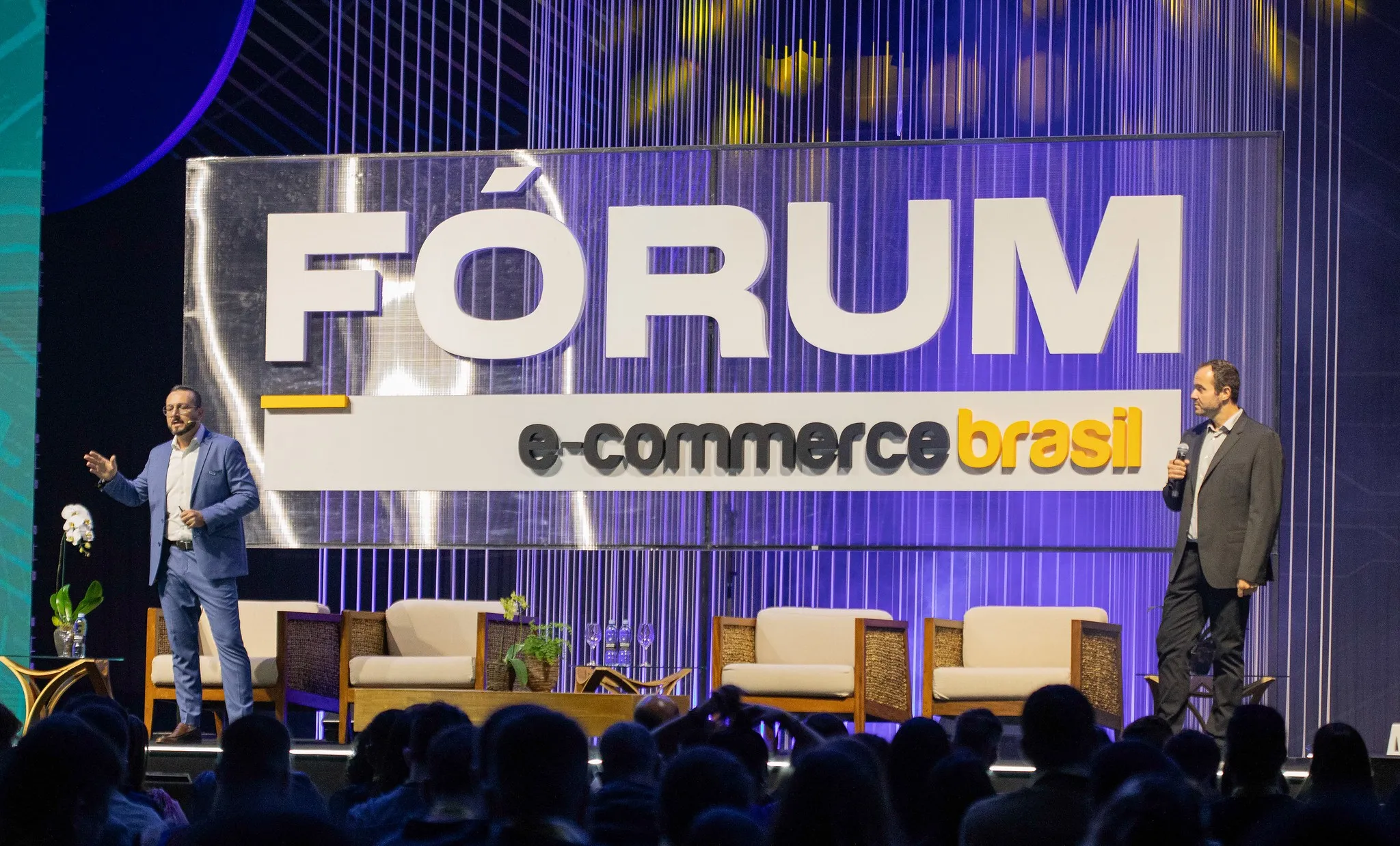The ecommerce trends 2025 came into clear focus at the E-Commerce Brasil Forum — one of Latin America’s leading events in digital commerce.
Three days. Hundreds of conversations. One clear insight: growth is not a sprint, it’s a system.
Beyond the headlines, the event offered a detailed view of the cultural, technological, and strategic shifts that are shaping the future of ecommerce across the region.

Less Screen Time, More Real Data
Brazilian consumers are spending less time in front of screens — and that changes everything. Even though Brazil remains one of the most connected countries in the world, the growth of ecommerce is slowing. Digital ad spending is following a similar trend.
The exception? Retail media.
Brazil is on track to surpass $1.2 billion in retail media investments, with Mercado Livre leading the way. Platforms like iFood, Magalu, and Casas Bahia show there’s a new wave of opportunity — but with new rules.
Now more than ever, it’s time to return to the data. Hyper-personalization, automated buying agents, and local context are critical levers for ecommerce brands.
Omnichannel: It’s About People, Not Just Channels
A true omnichannel strategy starts with a culture focused on the customer. Each channel plays a role, but all of them must answer the same core question:
What experience do we want to create?
That also includes:
-
The employee experience
-
Regionalization as a competitive edge
-
Personalization as a standard, not a luxury
Complete customer experiences must be present in every interaction, including returns within marketplaces.
Profitability and experience are not mutually exclusive.
Internal processes need to be redesigned to scale without losing human connection.
AI in Ecommerce: Less Hype, More Strategy
While many still see AI as a revolution, the real transformation lies in the interface, not the technology itself.
Generative models must be used with responsibility and human oversight. They can predict, personalize, and recommend — but only if:
-
The data is reliable
-
The purpose is clearly defined
-
The right model is used for the right problem
“If you’re using AI just because everyone else is, your project will likely fail.”
Among the top ecommerce trends 2025, AI plays a prominent role — but its impact depends entirely on the how, why, and what data is powering it.
Latin America as a Cultural Force
Latin America is no longer just a market — it’s a cultural powerhouse.
This shift is redefining:
-
Commercial strategy
-
Technology adoption
-
Brand positioning
From the rise of hyperlocal retail to the spread of AI and changing demographics, signs point to Latin soft power as a true competitive advantage. But to harness it, brands must stop fearing uncertainty — and start turning it into opportunity.

Ecommerce Marketplaces: Visibility and Conversion
Having a presence in marketplaces is no longer enough. To truly stand out, you must master six fronts:
1. Be discoverable
2. Convert effectively
3. Control distribution
4. Generate real excitement
5. Innovate with purpose
6. Build lasting relationships with customers
AI is already being used here — including for zero-clock shopping, where customers search for products via conversational prompts (e.g., ChatGPT).
The challenge is not technical — it’s strategic:
How do we balance experience, efficiency, and brand control in these new environments?
Digital Culture and Operational Innovation
Diego Barreto (iFood) shared a powerful insight:
“Logistics is not a cost. It’s a competitive advantage.”
To make this true, companies must work with:
-
Operational density
-
Applied intelligence
-
Scalable systems
AI helps anticipate demand, but there are no shortcuts. A company’s culture is its true operating system — and if the culture doesn’t work end to end, neither will the tech.
Innovation without purpose doesn’t scale.
But when the purpose is clear, innovation finds its way.
What Ecommerce Trends 2025 Are Telling Us
The ecommerce trends 2025 aren’t about a single technology, channel, or metric.
They’re about:
-
Understanding people more deeply
-
Using data as a compass, not a rearview mirror
-
Designing with intention
-
Growing with direction, method, and purpose
How We Do It at Minders
At Minders, we believe that not all growth is equal. That’s why we design strategies that are human, evidence-based, and grounded in reality.
Because when empathy, method, and data come together, growth doesn’t just happen — it leaves a mark.





